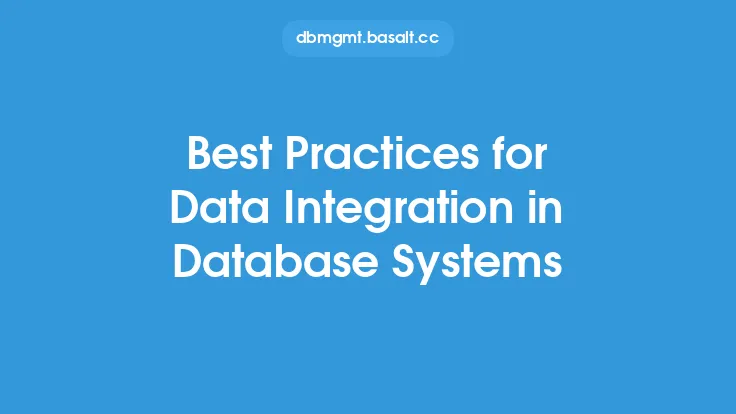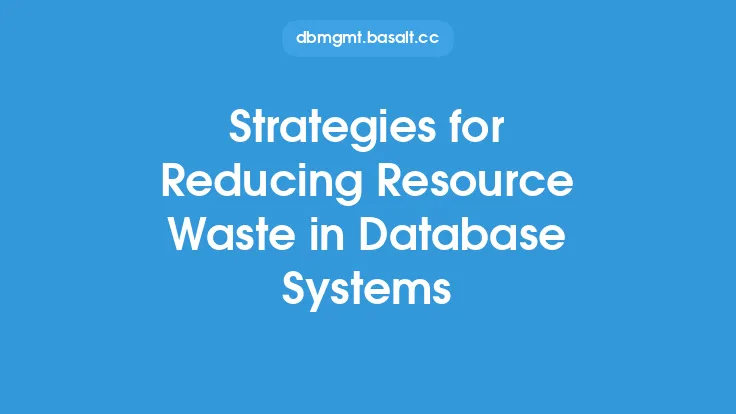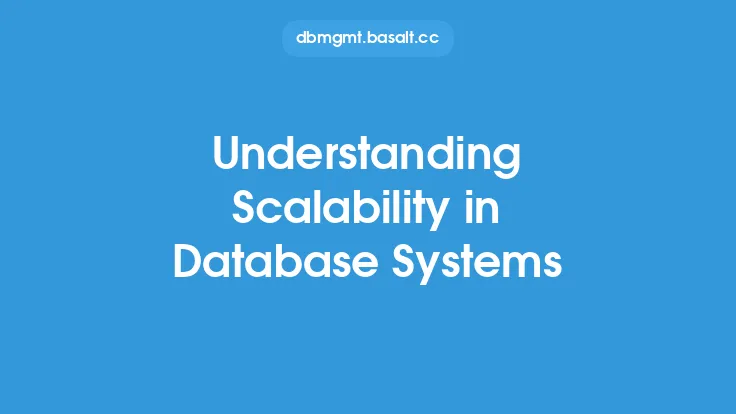Load balancing is a critical component of scalable database systems, as it enables the distribution of workload across multiple servers to improve responsiveness, reliability, and scalability. In a database system, load balancing is used to allocate incoming traffic or workload across multiple database servers, ensuring that no single server becomes a bottleneck. This is particularly important in high-traffic or high-transactional databases, where a single server may not be able to handle the workload, leading to performance degradation, errors, or even crashes.
Introduction to Load Balancing
Load balancing in database systems involves distributing the workload across multiple servers, which can be physical or virtual, to ensure that each server handles a manageable amount of traffic. This is achieved through a load balancer, which acts as an intermediary between the client and the database servers. The load balancer receives incoming requests, analyzes the workload, and directs the requests to the most suitable server based on predefined algorithms and rules. Load balancing can be implemented at various levels, including at the database level, application level, or network level.
Types of Load Balancing
There are several types of load balancing algorithms and techniques used in database systems, each with its strengths and weaknesses. Some of the most common types of load balancing include:
- Round-Robin (RR) scheduling: This algorithm directs incoming requests to each server in a cyclical manner, ensuring that each server handles an equal number of requests.
- Least Connection (LC) scheduling: This algorithm directs incoming requests to the server with the fewest active connections, ensuring that no single server becomes overwhelmed.
- IP Hash scheduling: This algorithm directs incoming requests to a server based on the client's IP address, ensuring that requests from the same client are always directed to the same server.
- Geographical scheduling: This algorithm directs incoming requests to a server based on the client's geographical location, ensuring that requests are handled by a server that is closest to the client.
Load Balancing Techniques
In addition to load balancing algorithms, there are several techniques used to implement load balancing in database systems. Some of the most common techniques include:
- Server clustering: This involves grouping multiple servers together to form a cluster, which appears as a single server to the client. The load balancer directs incoming requests to the cluster, which then distributes the workload across the individual servers.
- Database replication: This involves maintaining multiple copies of the database, each on a separate server. The load balancer directs incoming requests to the most suitable server based on the type of request and the current workload.
- Connection pooling: This involves maintaining a pool of pre-established connections to the database servers. The load balancer directs incoming requests to the most suitable server based on the availability of connections in the pool.
Load Balancing Architectures
Load balancing architectures can be categorized into two main types: centralized and distributed. Centralized load balancing architectures use a single load balancer to direct incoming requests to multiple servers. Distributed load balancing architectures use multiple load balancers, each of which directs incoming requests to a subset of servers. Some of the most common load balancing architectures include:
- Single-node architecture: This architecture uses a single load balancer to direct incoming requests to multiple servers.
- Multi-node architecture: This architecture uses multiple load balancers, each of which directs incoming requests to a subset of servers.
- Hierarchical architecture: This architecture uses multiple load balancers, each of which directs incoming requests to a subset of servers, with each subset being handled by a separate load balancer.
Challenges and Considerations
Load balancing in database systems poses several challenges and considerations, including:
- Session persistence: This refers to the ability of the load balancer to direct incoming requests from a client to the same server, ensuring that the client's session is maintained.
- Server affinity: This refers to the ability of the load balancer to direct incoming requests from a client to the same server, ensuring that the client's requests are handled by the same server.
- Database consistency: This refers to the ability of the load balancer to ensure that the database remains consistent across all servers, even in the event of failures or errors.
- Scalability: This refers to the ability of the load balancer to handle increasing workloads and traffic, without compromising performance or responsiveness.
Best Practices
To implement load balancing effectively in database systems, several best practices should be followed, including:
- Monitoring and analysis: This involves continuously monitoring the workload and analyzing the performance of the load balancer and the database servers.
- Configuration and tuning: This involves configuring and tuning the load balancer and the database servers to optimize performance and responsiveness.
- Testing and validation: This involves testing and validating the load balancing configuration to ensure that it meets the required performance and scalability standards.
- Maintenance and updates: This involves regularly maintaining and updating the load balancer and the database servers to ensure that they remain secure, stable, and performant.
Conclusion
Load balancing is a critical component of scalable database systems, enabling the distribution of workload across multiple servers to improve responsiveness, reliability, and scalability. By understanding the different types of load balancing algorithms and techniques, load balancing architectures, and challenges and considerations, database administrators can implement effective load balancing strategies to meet the performance and scalability requirements of their database systems. By following best practices and continuously monitoring and analyzing the workload, database administrators can ensure that their load balancing configuration remains optimized and effective, even in the face of increasing traffic and workload.





